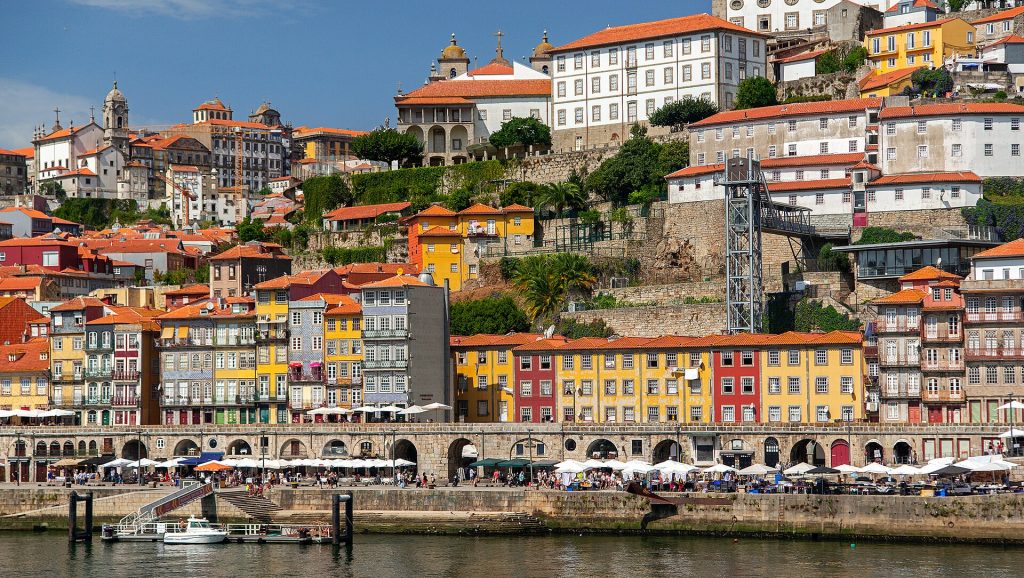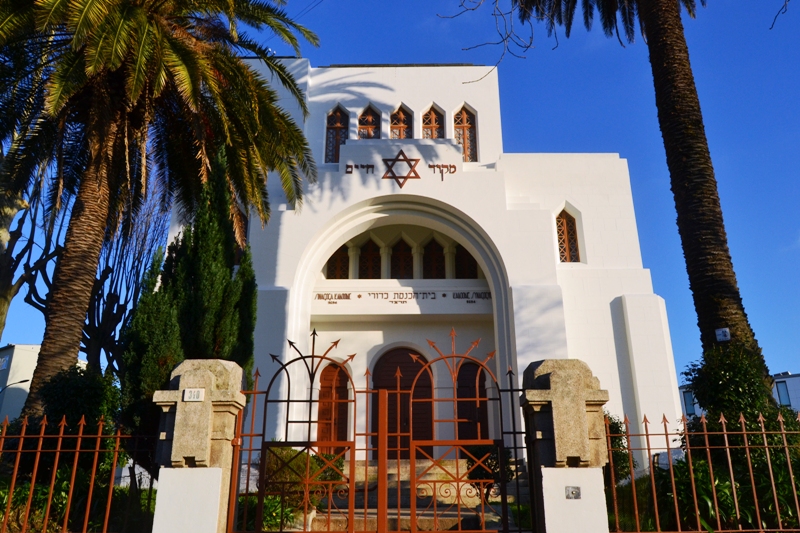
Porto is the capital of northern Portugal. It is the country’s second largest city after Lisbon. It is best known for its historic monuments and its wine. The Jewish presence dates back to the Middle Ages. The oldest Jewish quarter was located within the walls of the old city, where the Rua de Santa Ana is today, close to the Romanesque cathedral.
In 1386, Dom Joao I granted land to the Jews so that they could build a new quarter, close to the church of Nossa Senhora da Vitoria, which may have been the site of a former synagogue. The synagogue was located on the current site of the convent of S. Bento da Vitoria. Today, a plaque indicates this former location.

At the time of the Inquisition, the Marranos were forced to move to R. de S. Miguel, a secret synagogue located between numbers 9 and 11 of the street, as attested by a recent discovery.
There was also a Jewish quarter, Monchique, in the Bairro de Miragaia. In 1826, a historic Hebrew inscription, the “Monchique Stone”, was discovered and is on display at the Museu Arqueologico do Carmo in Lisbon.
Among the city’s leading Jewish figures were the philosopher Uriel da Costa (1590-1647), the physician Samuel da Silva (1571-1631), the rabbi and physician Abraham Pharar (?-1663) and the poet Bento Teixeira (1561-1618).
The name of the synagogue in Porto, Kadoorie, evokes the international reach of the Portuguese-Jewish community. Kadoorie is the name of a Portuguese-Jewish family that took English nationality and settled in Shanghai. Its members generously subsidized the construction of this fine monument with the help of the Portuguese communities in Lisbon, London, and Amsterdam in 1936. The synagogue has a capacity of 300 and offers all that is needed for religious service. It is to a large extent the work of Captain Barros Basto, who tried to bring the region’s crypto-Jews back to the faith of their ancestors.
In 2021, a Holocaust museum was created. Two years later, a memorial dedicated to the 842 victims of the Porto Inquisition was inaugurated. A long process of digitisation by the community of documents from Lisbon’s National Archives led to the identification of the names of these victims, which are now placed on a commemorative plaque 4 metres wide and 2 metres high. It is placed on one of the outside walls of the Jewish Museum in Porto .
By 2025, the number of Jews living in Porto had tripled in a decade, to around a thousand, largely thanks to the law on citizenship for Jews expelled following the Inquisition and the arrival of many students, particularly from France. Dozens of leaders of European Jewish communities met in Porto that year to note and salute this rare continental advance.
Today, Porto boasts a butcher’s shop, several kosher restaurants and another synagogue. Despite these very positive developments, the community has been the victim of anti-Semitic attacks under the guise of Palestinian support, with buildings damaged, including the Kadoorie synagogue, which was vandalised in October 2023.
Sources : Encyclopaedia Judaica, Rede de Judiarias, Times of Israel
A Portuguese Dreyfus
Raised in a Christian family in Porto, Barros Basto rediscovered Judaism when he visited a synagogue in Lisbon. After his conversion in Tangier, he married a young Jewish woman. He traveled tirelessly around the villages of the Porto region, speaking to the crypto-Jewish inhabitants and inspiring them with his fervent call to courageously and openly affirm their Judaism after centuries of secrecy. He was particularly concerned with providing a Jewish education to children, seeing this as the only way of rejuvenating the old communities. To this end, he set up a teaching college in Porto. He had many enemies in the Salazarist movement, however, and, when false charges were leveled against him, he was condemned and stripped of his rank in 1938. He died in poverty in 1961. Portugal rehabilitated him in 1997, officially acknowledging his innocence and tireless devotion.